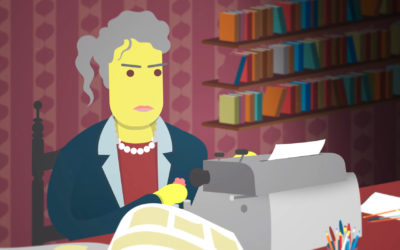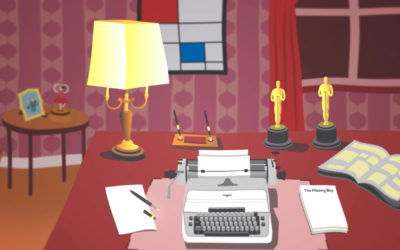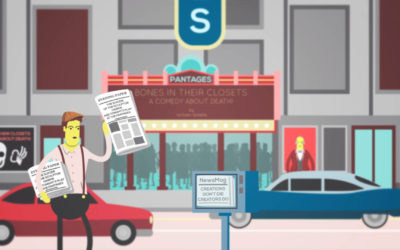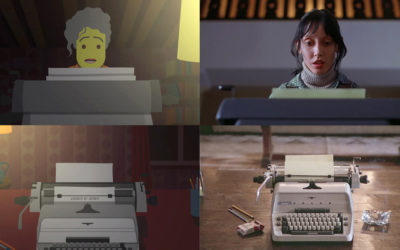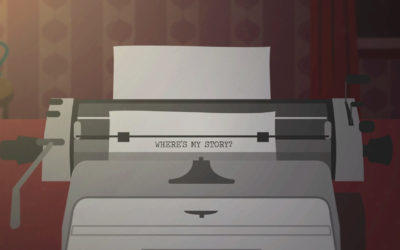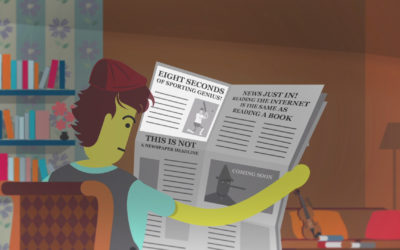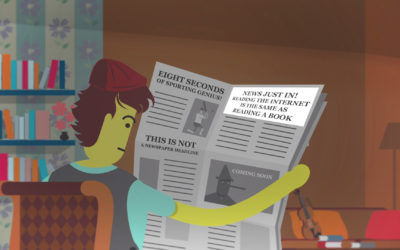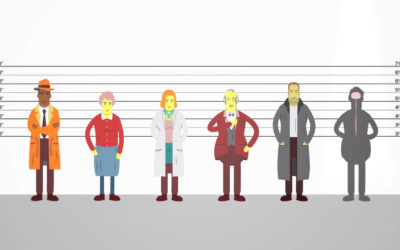14. THE MISSING MANUSCRIPT
The missing manuscript is the original script written by Mary and commissioned by Money Tree Productions. The term ‘original’ has different meanings depending on the context. In the film industry, an original script is usually considered a new story specially created for a film as opposed to an adaptation of an existing novel or play (see Case File #17). In copyright law, originality is one of the main requirements for many types of creative works to attract copyright protection.
This Case File #14 considers the criteria required by UK copyright law for certain types of creative works to attract copyright protection, focusing on fixation and originality.
FIXATION AND COPYRIGHT PROTECTION
It is a general presumption of UK copyright law that works should exist in some permanent form before they will attract copyright protection. That is, they should be ‘fixed’. For most artistic works, such as a photograph, the point at which the work is created is also generally the point of fixation. But, this is not necessarily true for literary, dramatic or musical works. For example, a musician might improvise a new tune while performing on stage, without ever writing it down or recording it. Unless it is fixed, the improvised tune will not be protected by copyright. Indeed, UK copyright law expressly states that copyright will not exist in a literary, dramatic or musical work ‘unless and until it is recorded, in writing or otherwise’, although it does not matter whether the fixation is carried out by the author or by someone else. What matters is that the work is fixed.
WHAT DOES ‘ORIGINALITY’ MEAN IN COPYRIGHT?
In order to receive copyright protection, literary, dramatic, musical and artistic works must be original. Originality is a threshold for attaining copyright protection, meaning a work will not be eligible for copyright protection without it. However, the legislation says very little about what originality actually means. Therefore, what is original, for copyright purposes, is guided by facts and decisions from case law.
In the UK, the courts have set a fairly low bar for satisfying the requirement of originality. They do not expect a work to be novel, inventive or even useful. Nor do they judge the quality of the work. In general, so long as the creation of the work involves some labour, skill, judgement or effort, the work will be considered to be original. However, it is important to note that not all types of labour, skill and judgement will be sufficient in a copyright context. For example, if the effort you have made in creating the work is very trivial or insignificant this will not be enough. Similarly, while it might require great skill to make an exact copy of a drawing or a painting, the copy that you make will not be protected by copyright. In this way, the originality requirement ensures that copyright protects only an author’s own intellectual creation.
WHY REQUIRE ORIGINALITY?
Copyright requires originality for several reasons. For one thing, it ensures that the work protected by copyright reflects the author’s personality and expression and that the effort the author expends in creating the work is substantial enough to justify legal protection. This also means that copyright protection is limited to each author’s expression, leaving non-original expressions and works free for others to use in the creation of new works: in this way, the originality requirement protects the creative and intellectual freedom of other creators. Additionally, copyright protection depends on originality as this maintains the incentive for authors to use their skills and efforts to keep making new works for the public to enjoy.
THE CASE: LADBROKE v WILLIAM HILL (1964)
This case involved a bookmaker, William Hill, bringing an action for copyright infringement of their betting slips (a ‘fixed odds football betting coupon’) against another bookmaker, Ladbroke. You can see copies of each bookmaker’s betting slips below.
Source: http://www.cipil.law.cam.ac.uk/virtual-museum/ladbroke-v-william-hill-1964-1-all-er-465
In the Court of Appeal, William Hill argued that their betting slip could be considered to be a literary or an artistic work. Either way, they claimed, the work was original and so protected by copyright. The Court of Appeal rejected the argument that the betting slip was an artistic work, but decided that it was an original ‘compilation’ and as such it was protected by copyright as a literary work. The House of Lords agreed. Commenting on the ‘vast amount of skill, judgement, experience and work’ that had gone into creating the betting coupon, the House of Lords confirmed that the work was protected by copyright and that Ladbroke had infringed that copyright.
FOR DISCUSSION: PUBLIC ART OR PRIVATE RIGHTS?
Art galleries and museums often take photographs of works of art within their collection and then claim that the photograph is protected by copyright, even when the work of art itself is no longer in copyright. That is, while the artworks themselves are in the public domain, the galleries claim copyright in their photographs of those works (see also Case File #2).
Why do you think galleries and museums claim copyright in photographs of existing works of art? Should these photographs be protected by copyright? Are they original?
USEFUL REFERENCES
For further discussion of the decision in Ladbroke v. William Hill [1964] 1 All ER 456 see here: http://www.cipil.law.cam.ac.uk/virtual-museum/ladbroke-v-william-hill-1964-1-all-er-465
For further information about the concept of the public domain, see here: https://www.copyrightuser.org/create/public-domain/
Download the PDF version of Case File #14 – The Missing Manuscript.
More Case Files
13. The Multiple Rights
Mary Westmacott is a freelance screenwriter; she writes scripts for films. Scripts are written works that contain the words of a film (or a play, television programme, video game, and so on)…
15. The Dream Job
Mary accepts a commission to write ‘an original script’ for ‘a film about a missing boy,’ not just for the ‘intriguing premise’ but also because ‘for once the contract terms were great; a dream job that would pay the bills for many years’.
16. The Pantages
When Mary sees Lord Vane at the entrance of the Pantages theatre, there is a paperboy distributing copies of the Evening Paper with the headline ‘The Suicide of the sculptor Harkin and tonight’s play at the Pantages’…
17. The Typewriter
The design of the typewriter that Mary uses to write her scripts was inspired by Jack Torrance’s typewriter in Stanley Kubrick’s The Shining. Famously, Kubrick’s The Shining is a film adaptation of Stephen King’s novel with the same title.
18. The Purloined Letters
Before she was murdered, Mary Westmacott had become increasingly concerned for her safety and state of mind. In her letter to Holmes she describes how, one night…
19. The Fateful Eight Seconds
As Watson enters the room we see Sherlock reading a newspaper. On one page, the headline reads: ‘Eight Seconds of Sporting Genius!’ The choice of headline was intentional….
20. The Lawful Reader
The headline ‘News Just In! Reading the internet is the same as reading a book’ refers to a copyright case in which the courts were asked to consider whether simply reading material online might infringe copyright.
21. The Six Detectives
Mary’s problems began when she ‘started fleshing out the main character: the hero-detective’. Before settling on one and starting seeing the others everywhere, she considered six potential protagonists for her story.


